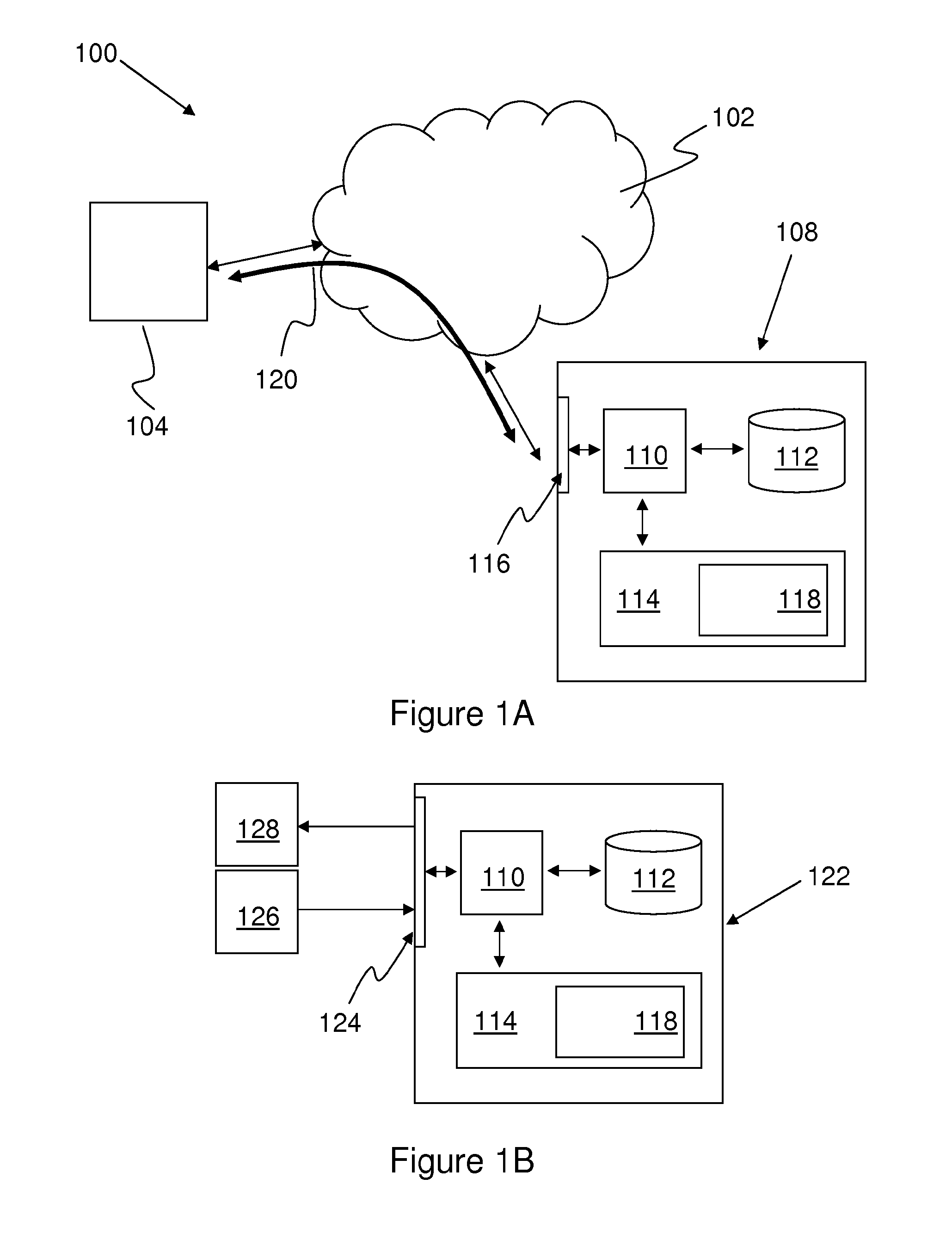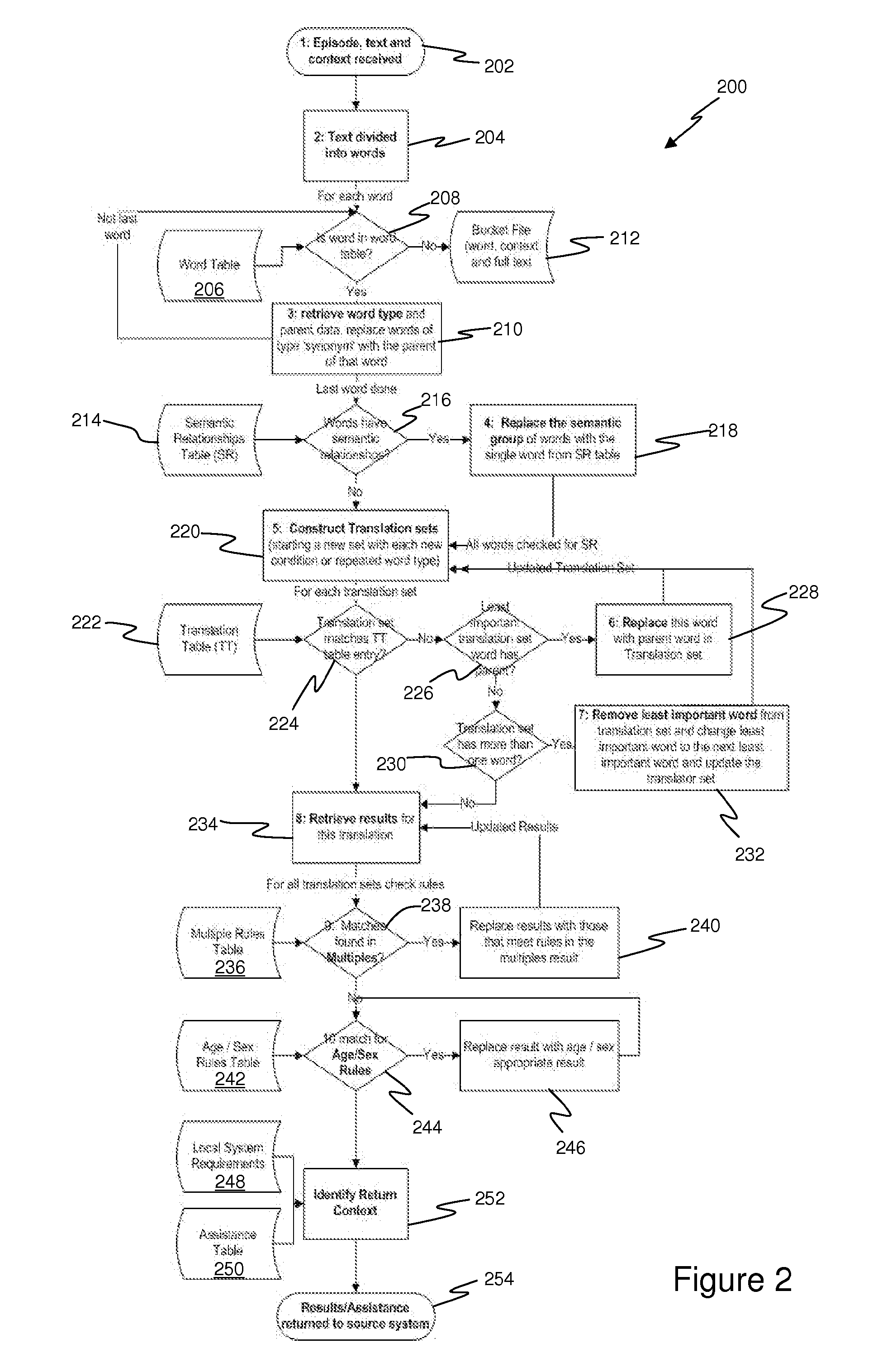Method and System for Classification of Clinical Information
a clinical information and classification technology, applied in the field of clinical data classification, can solve the problems of requiring substantial experience and expertise, affecting the effective use of clinical data, and a variety of different terminology for the same or similar conditions, so as to facilitate effective translation of input text and maximize the likelihood of identifying relevant terms.
- Summary
- Abstract
- Description
- Claims
- Application Information
AI Technical Summary
Benefits of technology
Problems solved by technology
Method used
Image
Examples
example 1
[0104]In this example, the input descriptive text is “hydorocele”, having associated episode details that the patient is a male, aged 35. The processing of this example is illustrated in FIG. 4.
[0105]An Initial Input Table 400 is formed, wherein each row corresponds with a word in the input text, and accordingly in this example the table contains only a single entry. In this case, the input “hydorocele” has been mistyped, and the correct spelling is “hydrocele”. This particular misspelling is included in the Word Table 206, and accordingly is associated with the type “synonym”, with the “parent” being the correctly spelled term. This first substitution, performed at step 208, is illustrated in the Table 402. Subsequently, replacement of the synonym occurs, and the correct entry in the Word Table 206 is identified, along with its associated type, ie “condition”, as shown in Table 404.
[0106]In this simple, single word, case there are no semantic relationships, and accordingly the fina...
example 2
[0107]The second example has the same descriptive text input (“hydorocele”), however in this case the episode details include the information that the patient is a male aged 28 days (ie a newborn). This example, relevant portions of which are shown in FIG. 5, is a first illustration of the potential effect of application of age / sex rules. The initial steps in the translation process, resulting in translation matches shown in the Table 500, are identical with Example 1, and accordingly are not shown in FIG. 5.
[0108]Table 502 shows relevant entries in the Age / Sex Rules Table 242. In particular, the Table 502 shows that for the ICD code N433, and for males aged between zero and one years, the code should be replaced with P835. Similarly, for SNOMED-CT, the code 386152007 should be replaced with 236028000. It will be noted that the Age / Sex Rules Table 502 includes provision for a range of codes to be matched. In the present case the “Code Upper” field is not required, since a range does...
example 3
[0110]The third example is again based on the same descriptive text input as Examples 1 and 2, however in this example the episode details include the information that the patient is a female, aged 27. This example serves to further illustrate the application of the Age / Sex Rules Table 242. Once again, the translation matches resulting from the initial steps of the process 200 are identical with the previous two examples, as shown in the Table 600.
[0111]A relevant excerpt from the Age / Sex Rules Table 242 is shown in the Table 602, in which the ICD code N433 is required to be replaced with the code N94 in the case of a female patient aged between zero and 149 years (ie effectively of any age).
[0112]The resulting replacement matches are shown in the Table 604, and the final results in the Table 608. Once again, a Report 610 is shown, as may be returned to the source system.
PUM
 Login to View More
Login to View More Abstract
Description
Claims
Application Information
 Login to View More
Login to View More - R&D
- Intellectual Property
- Life Sciences
- Materials
- Tech Scout
- Unparalleled Data Quality
- Higher Quality Content
- 60% Fewer Hallucinations
Browse by: Latest US Patents, China's latest patents, Technical Efficacy Thesaurus, Application Domain, Technology Topic, Popular Technical Reports.
© 2025 PatSnap. All rights reserved.Legal|Privacy policy|Modern Slavery Act Transparency Statement|Sitemap|About US| Contact US: help@patsnap.com



